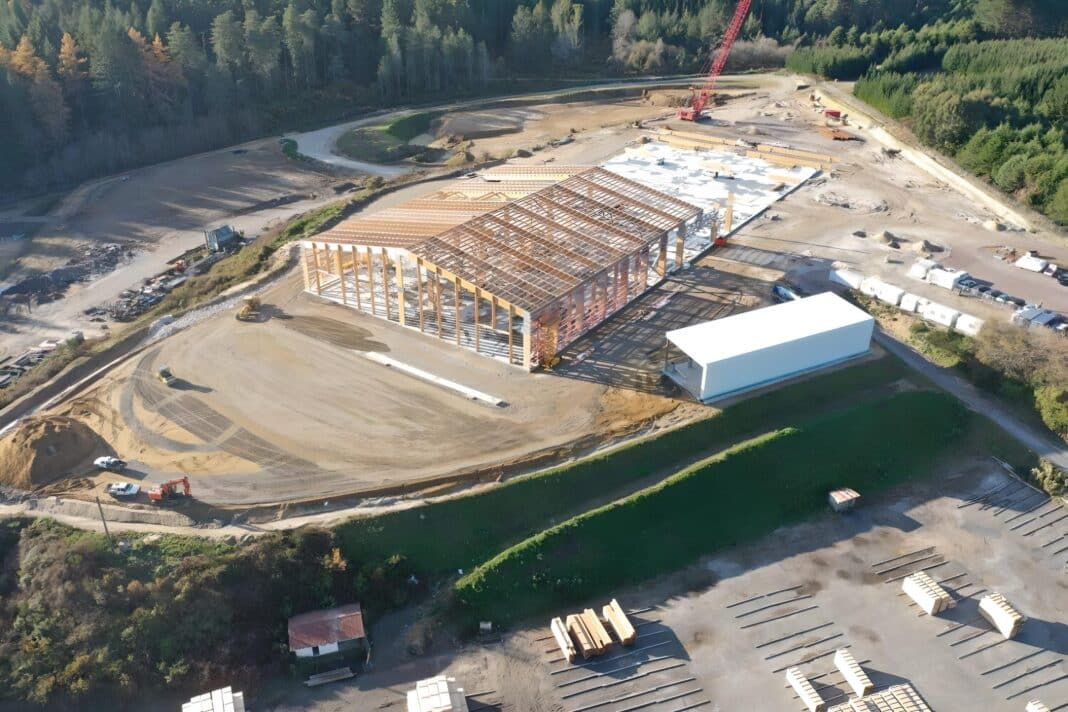Saturday marked the 20th anniversary of the late Phil Verry and son, Marty Verry purchasing the Rotorua sawmill Red Stag after two years in receivership.
From that consequential date, Tuesday, the 16th of December 2003, Reg Stag, one of New Zealand’s oldest mills, has emerged like a phoenix from the ashes, now recognised as the largest sawmill in the southern hemisphere and one of the most modern and sustainable.
Reflecting on his 20-year journey at the top, Marty Verry, still CEO and as motivated as ever, told LinkedIn that the journey has been “all uphill,” an “amazing trip” with “awesome staff, customers, and suppliers.”
Mr Verry, who does not come from a traditional wood processing background, has previously spoken about the secret to Red Stag’s success.
“Timber prices haven’t increased for decades and have gone down in real terms, while labour and other costs have gone up. The only way to make money in that situation is to reinvest in a high-tech plant that eliminates manual handling,” he said in an interview with NZ Herald in 2011.
“Those high-capacity manufacturing businesses that keep up with this philosophy are succeeding, and the rest are failing or getting niche.”
Putting himself through university by hay carting and shearing, playing professional rugby in France, and working in IT and banking in London, Mr Verry is could be considered a natural disrupter in an otherwise staid and conservative industry.
He told the NZ Herald, that entering new sectors without experience teaches you that you “don’t succeed on your own.”
“It forces you to have the best people in the sector around you, to tap their expertise. This, in turn, means you end up with the best team in the industry and the highest-performing company.
Fast forward to 2023, and it now produces more than 600,000 cubic metres of timber, which is not only sold in the New Zealand and Australia markets but across the globe – and has invested in more than 4,000 hectares of the world’s most productive radiata pine forests.
In recent years, Red Stag, which now operates New Zealand’s largest sawmill, cross-laminated timber factory and frame and truss operation, has been instrumental in the drive to create higher-value forest products.
This has led to the construction of an enormous CLT factory in 2021 and the acquisition of TimberLab – a 65-year Auckland business with “institutional knowledge” in mass timber products, in August last year.
At the time of the purchase, Mr Verry said the TimberLab deal was “In many ways, the missing piece of a puzzle that Red Stag has been building over the last two decades.”
As for the future, Mr Verry is a vocal supporter of the “wholesale adoption” of wood in construction, fuel and other downstream products.
Speaking to “This Climate Business” podcast in 2020, Mr Verry said forest planting is “only one part of dealing with climate change” and that a “Wood First” policy – rejected by the previous government, was essential to not only meet climate commitments but also demand for housing.
In October, Wood Central reported that the New Zealand government is looking to prefab construction and modular housing to meet its billowing demand for housing.
Christopher Luxon’s multi-party coalition government, sworn in last month, has committed to building thousands of new houses in major centres after the OECD reported that NZ has the world’s least affordable housing market.
Mr Verry, a long-term supporter of cross-laminated timber as a solution for housing, is on record as saying that CLT “is one of the ‘massive timber’ group of products, along with others such as glulam, that is opening up the mid and high-rise building market to wood.”
“Our vision is that wood will be the norm in mid-rise buildings by 2030,” he said back in 2018, with the technology having the potential to save thousands of dollars on the cost of housing and mid-rise buildings by reducing material cost, on-site labour costs and construction time.”






